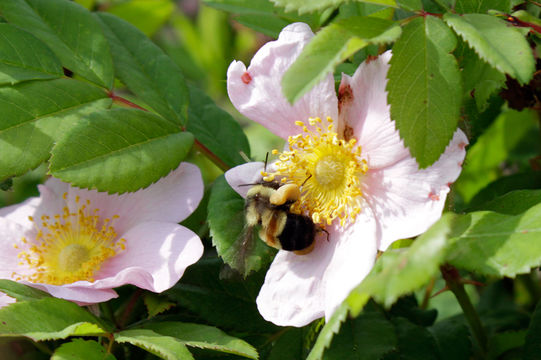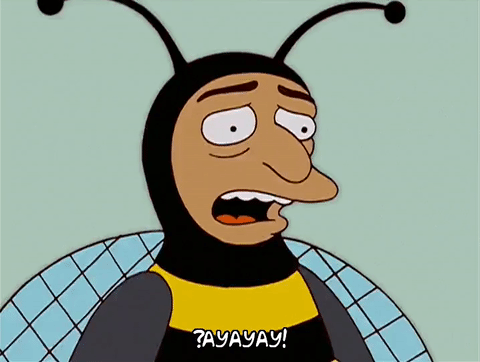 I love bees.
I love bees. 
 I love bees.
I love bees. 
I really, really love bees.
Unfortunately, many species of bees have been declared endangered in the US. Several species of Bombus and Hylaeus are under great threat, especially the Bombus Affinis.
Bombus is the genus of bees that we commonly call "bumblebees". Hylaeus is a genus of bees found in Hawaii and other Pacific islands and is also known as the "yellow-faced bee".
Bumblebees can be found throughout the United States, but are most commonly found in the Midwest area (Missouri, Wisconsin, Iowa, Michigan, Minnesota, Indiana, Illinois, and Ohio). Some species of Bombus can also be found in Britain, including Ruderatus and Terrestris. They reside in plains and grasslands, making use of the local flowers' nectar. While most genera of bees create colonies, some create solitary nests, such as Hylaeus.
One of my favorite species of Bombus is the Bombus Affinis, or as some call it, the 'Rusty-patched Bumblebee'.

Photograph credits to Encyclopedia of Life.
The Rusty-patched bee primarily feeds on nectar from fruits such as tomatoes, and in doing so, provides the much necessary pollination for those plants.
The population decline of bees worldwide has been documented since the 1990's. A significant decline was noted in Europe in 2009, and evidence suggests that a similar decline is affecting North America as well. While some species remain fairly abundant, others are declining rapidly due to climate change, loss of habitat, and pesticides. There is also evidence that commercial bumblebees are causing the spread of pathogens to wild bee populations.

A petition has been written by the Xerxes Society to the federal government to enlist Bombus Affinis as a critically endagered species. At the moment, the Bombus Affinis labelled endangered by the US Fish and Wildlife service, and it is protected by the Canadian Species at Risk Act (SARA) as of 2010.
The Bombus Affinis, like many other bees, is responsible for the pollination for tomatoes and many other fruits in the US and Canada. A drop in the population of Rusty-patched bees could predict a similar drop in population for many other bumblebees, which would cause even greater problems. Bees are a primary source of pollination for many plants, and low bee populations could cause cascading negative effects in the environment. As plants struggle to survive and reproduce, certain consumers will also decrease in population. An extinction for bumblebees could result in the extinction of tomatoes and many other cash crops. In Britain and the Netherlands, many kinds of flowers and fruit have gone extinct due to their primary bumblebee pollinators also going extinct
Fortunately, not all hope is lost for our rusty friend! There are many steps that can be taken to help the poplation of the Rusty-patched Bumblebee grow. One of the biggest ways landowners can help is by ensuring that their land accommodates Bumblebees. There are many online guides that can help you measure how bee-friendly your land is. I would also encourage you to be mindful of commercial crop companies that are importing foreign bees and bee pathogens, and consider buying produce grown by bee-friendly farms.
There's a lot of work to be done to save the Bombus Affinis, but I am certain that we can save it through mindful land-planning and conservation efforts.
